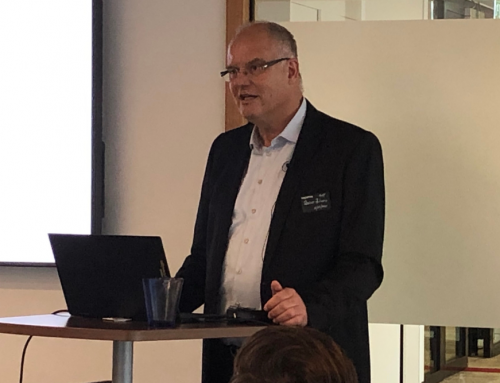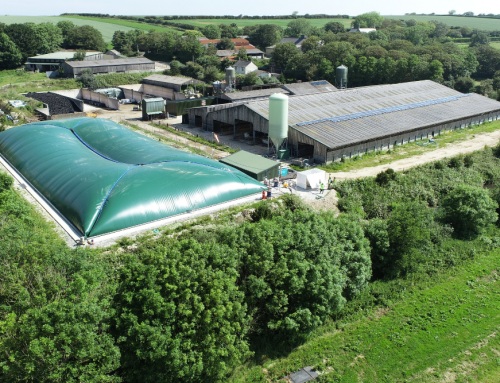Best practices when it comes to ERP implementation come down to one central theme – preparation! From selecting a partner, to choosing a system, to going live – success is there for those who prepare.
This article will walk you through some of the key elements of ERP implementation best practice, but if you want more we have also written an SAP Business ByDesign implementation guide here so do feel free to click through for more.
What is ERP?
ERP or Enterprise Resource Planning software refers to a suite of services that runs all your business processes from one interface, so you can conveniently manage your day to day business activities. These might include accounting, projects, procurement, sales etc It is a powerful business tool that comes in all shapes and sizes. We work predominantly with mid-sized businesses who benefit from cloud ERP designed for them. But you can get systems which suit very small companies and others which are built specially to run entire mega corps. The system we work with is a cloud system which works “out-of-the-box” – which means it is not built bespoke but can be easily adapted to individual needs.
ERP Implementation best practices
Getting it wrong can lead to an inefficient organisation operating below par. In the worst case it can leave you paralysed and unable to fulfill orders. Well, that’s got the worst news out of the way! And while horror stories can be off putting – it doesn’t have to be that way and once you know the pitfalls you can be sure to avoid them with good ERP implementation strategies. That’s why it is a good plan to read up on best practices before you begin.
Why are you doing this?
There are many very good reasons for wanting to implement ERP – and if a list of benefits would prove useful right now there is one at the end of this section. But we would also suggest having a good idea of how these benefits apply to you. Why are you doing this now? What do you want to achieve?
When you know this you will have a mission statement you can stick to – even if the going gets tough. Your list should include end gains for the business as well as problems to be solved. This will give you a head start when you talk to potential vendors. People come up to us at trade shows and tell us – “We know we need to do something but we don’t know what.” Believe me, this list will get you to the heart of that conversation much more easily and everyone can become productive more quickly.
10 Benefits of ERP for a mid-sized business
- Visibility across all day to day business processes
- Insights & reporting built in
- One data base means a single source of truth
- Efficiency – reduced time taken by staff for daily activities
- Improved customer service – more about people less about spreadsheeets
- An end to silos – data is available across departments
- Processes standardized to industry best practice
- Stay compliant with all regulations wherever you are
- Data security – cloud storage equals secure data centres
- Known, reliable costs – no IT department required
Are you ready for ERP?
You may have heard about the imperative to go digital. According to the researchers at Oxford Economics more than half of small and midsize companies see digital transformation as a core business goal and it is increasingly being presented by the experts as a matter of survival. But are you ready for ERP? Here is a quick check list.
5 indications that you are ready for ERP
- Rapid Growth of the business
- Diverse systems that don’t talk to one another are impeding that growth
- Investors or lenders require more robust financial processes and reporting
- Company expansion to other locations including overseas
- Legacy systems are unsupported, out of date or unsecured
So now you are ready to choose a solution and find a trusted partner.
Solution Choice
There is more choice than ever so when picking cloud ERP for the mid market make sure you short list only those solutions that can give you exactly what you need – don’t get distracted by eye-catching bells and whistles. Then, once you are sure of core functionality, you can start thinking about look and feel, ease of use and any extras you want.
Partner Selection
Choosing a partner is the most important decision you need to make. If you get it wrong you could be stranded with software that is not working for you and it won’t be the software’s fault. Here are some questions to ask yourself about potential erp vendors;
Do they have the right specialists on the team – can they carry out customisations in-house – do they have their own trusted project managers. Are they interested in getting in and out quickly or do they have an interest in working with you long-term? You may only need one major implementation project but you will need an on-going relationship for many reasons – for example if you are hoping to open up extra functionality, add new users, expand to other countries, add warehouses etc
Here is a guide to what makes In Cloud Solution different – Defining the In Cloud Difference
So now we get to the purpose of this article;
10 ERP implementation best practices and an added bonus for luck.
- A clear idea of why you are doing it.
- An inspired project team – able to generate meaningful management and staff buy in.
- A good idea about what your chosen solution can and can’t do. Don’t ask for the moon if its not within your grasp – you will only be disappointed.
- A great relationship with your vendors – your trusted partners – you need to be able to trust them enough to take their advice.
- A clear idea of what customisations you need/want and how much extra time and cost this will add to the project.
- An understanding of the implementation methodology being used by your trusted partners and the timetable you are all working towards.
- Good clean data for smooth data migration.
- Adequate Testing built into the timetable.
- Proper training for end users.
- Realistic budget and timetable
Added bonus – A sense of humour – this can make all the difference! We have clients who have rolled out Business ByDesign in several locations – each time more quickly and smoothly than the last. They put this down to the quality of their project team and the sense of fun and camaraderie that they generate. IT projects can be dry and homourless but they don’t have to be!
Document your processes
On top of all this you need to document your processes. Anything not written down becomes an assumption which is dangerous territory. Also it is worth bearing in mind that when you are buying an out-of-the-box solution like SAP Business ByDesign you benefit from the fact that it comes pre-configured to best practices. That means that sometimes you may need to shape your processes to fit the system. If you do this it will work extremely efficiently and give very good value for money. If you have good reasons not to do this then you need to factor in extra time and money for customisation. InCloud Solutions have a team of highly experienced developers who can do this for you, but other vendors may need to buy in additional specialist help.
Takeaways
By employing best practices and by managing the process well, you are taking control of the success or failure of your project and the risks can be minimized. With good controls in place you can avoid the project taking longer than expected or exceeding budgeted costs. The takeaway from this post should not be a collection of reasons not to implement ERP, but rather, some ideas for improving the chances of success.
If you would like to know more about InCloud Solutions or want to take your project to the next stage – please contact [email protected] or call 01628 876723










Leave A Comment